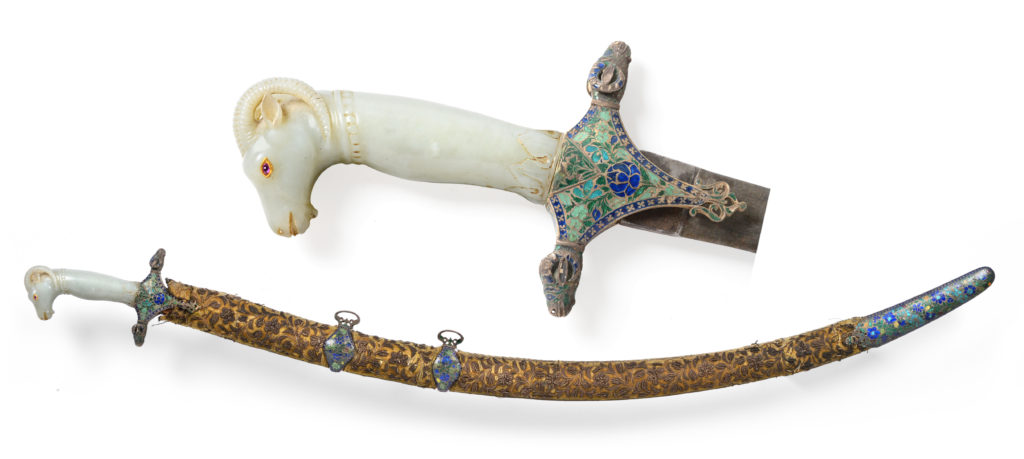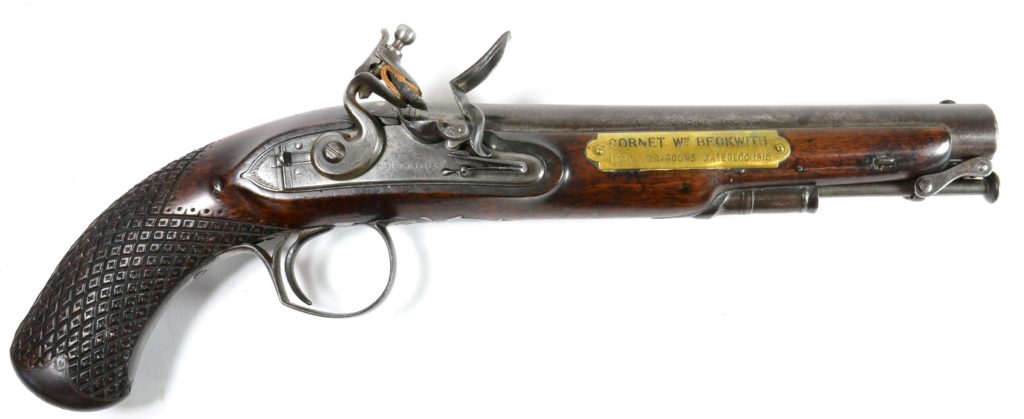Indian sword makes thousands in sale
A rare late 18th-century Indian Shamshir sword has sold for a hammer of £14,000 in a North Yorkshire saleroom.
 The beautifully decorated sword had a curved Wootz blade, a jade hilt – the pommel carved as a ram’s head with a ruby and gold eye – and a silver cross guard with enamel decoration in an embroidered velvet scabbard.
The beautifully decorated sword had a curved Wootz blade, a jade hilt – the pommel carved as a ram’s head with a ruby and gold eye – and a silver cross guard with enamel decoration in an embroidered velvet scabbard.
The sword was possibly made under the influence of Claude Martin of the Lucknow Arsenal. Frenchman Claude Martin was a Major-General in the British East India Company, a self-made man who had risen through the ranks to become an integral part of the ruling elite of Lucknow. A polymath, Martin amassed a massive fortune and collections of fine art and antiques, whose fortune was used after his death for the benefit and education of the poor.
The sword was part of a Private Collection of Arms and Militaria, which reached a total hammer price of £45,600 for the forty-two lots at Tennants Auctioneers. Other desirable items for the collection included an 18th-century Indian Shamshir/Talwar, which sold for £4,500, a late 18th-century Persian Shamshir, which also sold for £4,500, and an 18th-century Indo-Persian Matchlock Rampart Gun, which sold for £2,900.
Elsewhere in the sale, an early 19th-century Officer’s flintlock pistol, which was carried at Waterloo by William Beckwith of Trimdon, Co. Durham when he served with the 16th Light Dragoon, sold for £3,500. The pistol was made by John Prosser of London and was carried by Beckwith into battle.

Both Beckwith and the pistol survived the 1815 battle in which his regiment made four charges against the French forces. Beckwith was later promoted to General, he served in India, and went on to serve as High Sherriff of Durham for 1857, having inherited Silksworth House, Co. Durham from his father-in-law.

